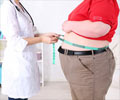US public health experts suggest people can attack both the obesity epidemic and global warming threat by cutting calories and carbon dioxide at the same time.
Get out of your car and walk or bike half an hour a day instead of driving. And while you're at it, eat less red meat. That's how Americans can simultaneously save the planet and their health, say doctors and climate scientists, public health experts suggest.
The payoffs are huge, although unlikely to happen. One numbers-crunching scientist calculates that if all Americans between 10 and 74 walked just half an hour a day instead of driving, they would cut the annual U.S. emissions of carbon dioxide, the chief greenhouse gas, by 64 million tons, notes Seth Borenstein, writing in the Huffington Post.About 6.5 billion gallons of gasoline would be saved. And Americans would also shed more than 3 billion pounds overall, according to these calculations.
The Centers for Disease Control and Prevention is considering public promotion of the "co-benefits" of fighting global warming and obesity-related illnesses through everyday exercise, like walking to school or work, said Dr. Howard Frumkin, director of the CDC's National Center for Environmental Health.
"A simple intervention like walking to school is a climate change intervention, an obesity intervention, a diabetes intervention, a safety intervention," Frumkin told The Associated Press. "That's the sweet spot."
Climate change is a deadly and worsening public health issue, said Frumkin and other experts. The World Health Organization estimated that 160,000 people died in 2000 from malaria, diarrhea, malnutrition and drownings from floods -- problems that public health and climate scientists contend were worsened by global warming. Officials predict that in the future those numbers will be higher.
The American Public Health Association, which will highlight the health problems of global warming in April, is seeking to connect obesity and climate change solutions, said executive director Dr. Georges Benjamin.
Advertisement
The key is getting people out of the car, Patz and Frumkin told the public health association at its annual convention. Reducing car travel in favor of biking or walking would not only cut obesity and greenhouse gases, they said, it would also mean less smog, fewer deaths from car crashes, less osteoporosis, and even less depression since exercise helps beat the blues.
Advertisement
The average person walking half an hour a day would lose about 13 pounds a year. And if everyone did that instead of driving the same distance, the nation would burn a total of 10.5 trillion calories, according to the scientist, formerly with the University of California at Berkeley. At the same time, that would cut carbon dioxide emissions by about the same amount New Mexico produces, he said.
"The real bang for the buck in reducing greenhouse gas emissions was from the avoided health expenses of a sedentary lifestyle," said Higgins.
But it's not just getting out of the car that's needed, said Dr. Robert Lawrence of the Johns Hopkins School of Public Health. A diet shift away from heavy meat consumption would also go far, he said, because it takes much more energy and land to produce meat than fruits, vegetables and grains.
Recent studies support that argument. Last year the United Nations Food and Agriculture Organization reported that the meat sector of the global economy is responsible for 18 percent of the world's greenhouse gas emissions. Much of that is indirect, including the fertilizer needed to grow massive amounts of feed for livestock, energy use in the whole growing process, methane released from fertilizer and animal manure, and transportation of the cattle and meat products.
Similar calculations were made in a study in September in the medical journal Lancet.
The average American man eats 1.6 times as much meat as the government recommends, Lawrence said. Some studies have shown eating a lot of red meat is linked to a higher risk for colon cancer.
As for fighting obesity and global warming by walking and cycling, don't expect people to do it easily, said Kristie Ebi. She's a Virginia public health consultant and one of the lead authors of the Intergovernmental Panel on Climate Change report.
Citing the decades-long effort to curb smoking, she said, "It turns out changing people's habits is very hard."
Source-Medindia
GPL/M











